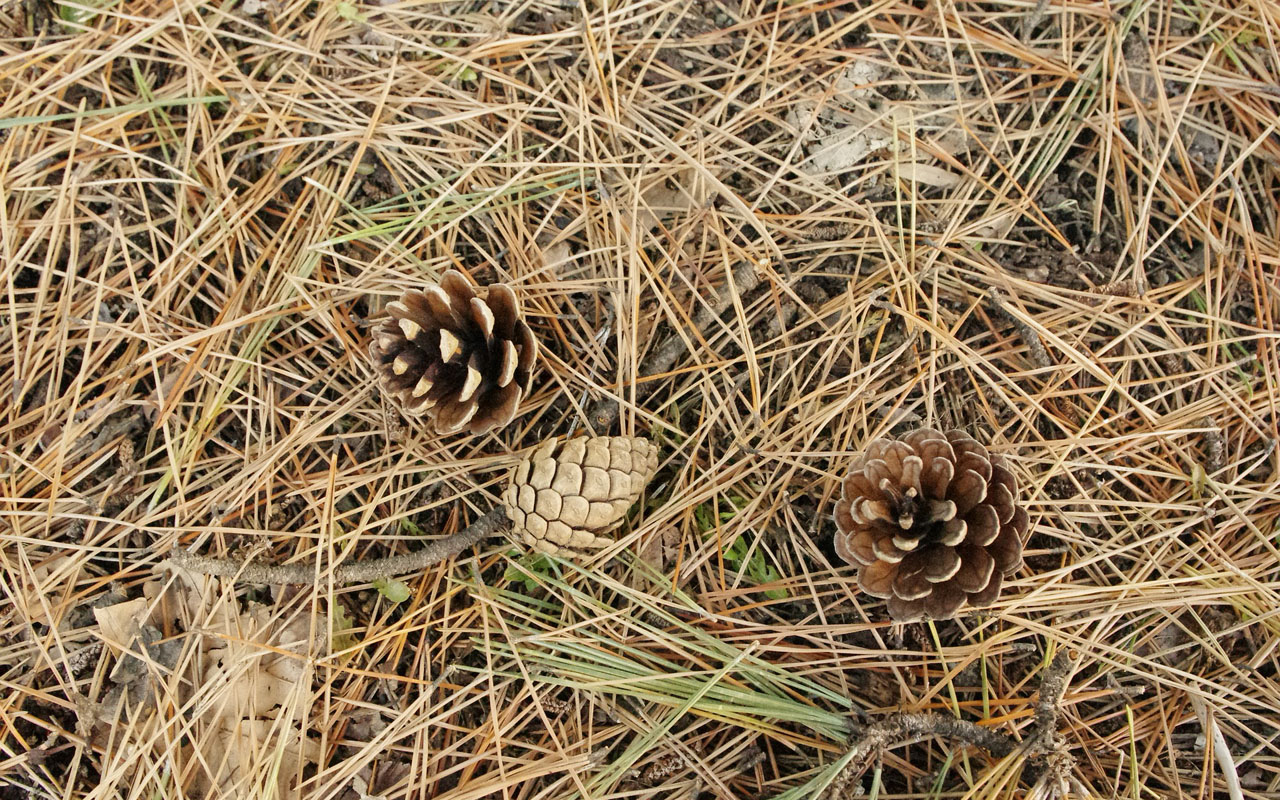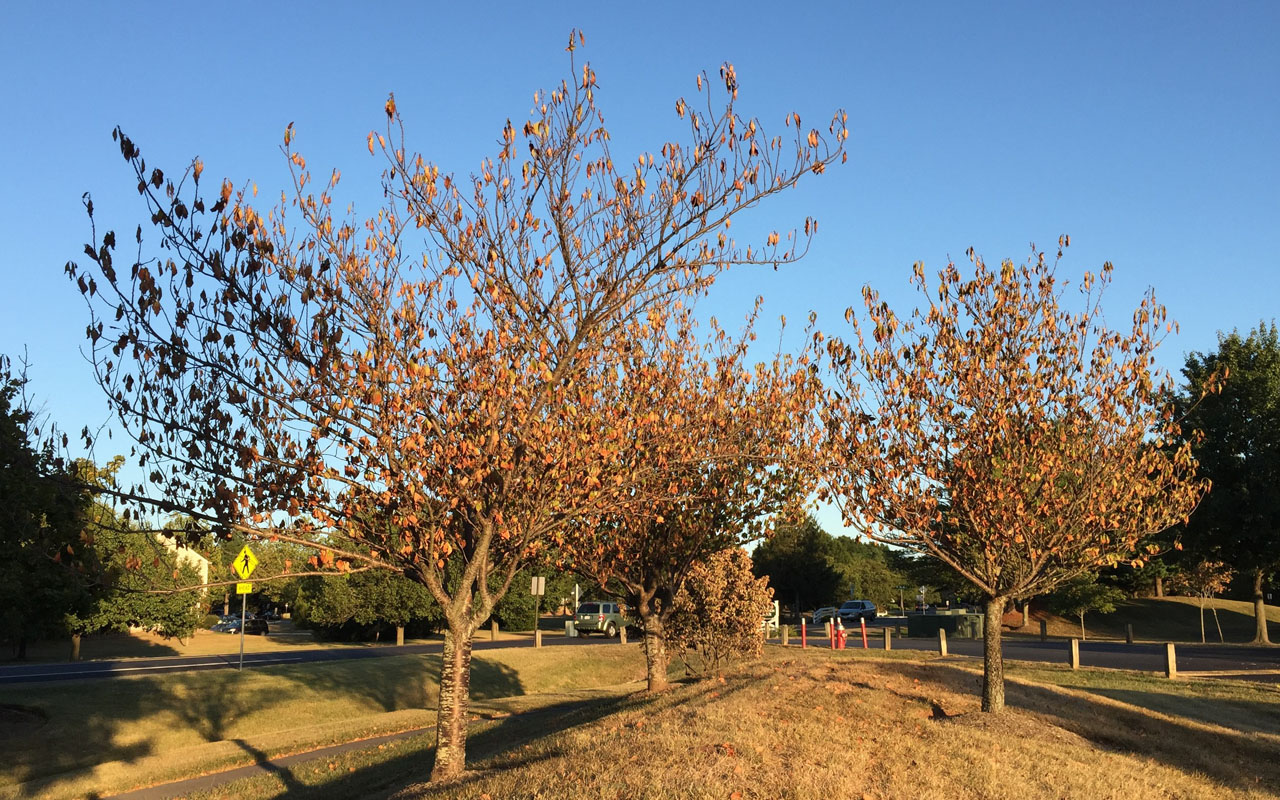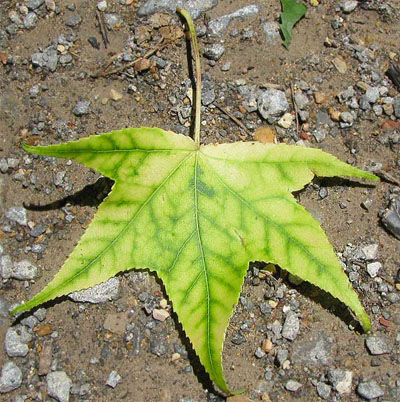When a tree’s leaves turn yellow or drop off in summer, it could be due to a number of causes. Sometimes, it’s perfectly normal and nothing to worry about. But, in many cases, summer leaf yellowing is caused by insects or diseases, environmental factors, or things you’ve done (or not done!) to your tree, all of which can result in dieback and failure to thrive.
To know whether yellow leaves on your tree in summer are a serious problem, we share details about why leaves turn yellow, what signs to look out for, what’s likely causing the problem, and what to do about it.
 Normal Summer Yellowing of Tree Leaves
Normal Summer Yellowing of Tree Leaves
Every leaf has a lifespan—even on an evergreen tree. While deciduous trees drop their annual leaves each fall, evergreen trees have a different schedule. Unlike the annual leaf production of deciduous trees, the average lifespan of a broadleaf or coniferous evergreen leaf is three years.
Yellowing leaves in evergreen trees
Evergreens can drop leaves or needles throughout the year, depending on their species and their growing pattern. After an evergreen has put out sufficient new leaves during spring or summer, it can safely discard old leaves without threatening its energy stores or ability to produce more energy through photosynthesis.
Evergreens such as pine trees and arborvitae drop their needle-like leaves in late summer or early fall, while yews discard their three-year-old leaves in late spring and summer.
Broadleaf evergreens such as magnolia and holly shed old leaves in summer, after successful new leaf growth is established.
So if you see regular, yellowing foliage in summer among an evergreen tree’s healthy, green leaf growth, it’s most likely business as usual.
Yellowing leaves in deciduous trees
Deciduous put out new leaves each spring, after winter dormancy and cold weather have passed. Their new, juvenile spring leaf growth may be yellow or yellowish-green, but as those leaves mature in summer they attain their full, healthy color. Unless your tree is a cultivar chosen for its yellow or chartreuse foliage, the summer leaves on a deciduous tree should be green.
Signs of Abnormal Leaf Yellowing in Summer
For both evergreen and deciduous trees, you should watch out for abnormal occurrences such as:
- New leaf growth in summer is yellow instead of green
- Summer leaves start green, then turn partially or wholly yellow
- Excessive yellow leaf drop
- Drooping yellow leaves
These are examples of yellow summer leaves that require attention, as they signal that your tree is struggling.

Cherry trees with yellow, dried leaves due to drought in Fairfax County (By Famartin – Own work, CC BY-SA 4.0)
Causes of Summer Leaf Yellowing
Yellowing leaves in summer can be caused by biotic or abiotic factors.
Biotic factors are living organisms that affect a tree, such as
- insect pests
- animal pests
- bacteria
- fungi
Abiotic factors are external events or conditions that affect a tree, such as mineral deficiency, drought, and temperature.
Insects, Pests & Diseases That Cause Leaf Yellowing
These organisms may damage a tree’s leaves and branches or its internal system that moves water and nutrients to leaves, leading to leaf yellowing.
- Insect damage can cause yellowing when leaf tissue is damaged and when leaf sap is extracted, such as by caterpillars, aphids, and spider mites. Damaged leaves decline when water and nutrients are cut off
- Ground-dwelling pests such as gophers can damage a tree’s root system. The stress of lost roots is compounded by reduced mineral and water uptake, resulting in leaf yellowing from chlorosis.
- Bacteria and fungi can reduce a tree’s photosynthesis, water, and nutrient levels. For example, powdery mildew covers a leaf’s surface, limiting the amount of sunlight reaching the leaf’s surface, while verticillium wilt clogs a tree’s internal vascular system and prevents the transfer of water and minerals to leaves. These and other diseases cause affected leaves to become stunted, turn yellow, or wilt.
NOTE: There are many pests and diseases that can affect your trees. It can be difficult for a homeowner to accurately identify insect pests and diseases. Our trained staff can identify and treat these damaging biotic organisms, so if you are concerned about damage to your trees, call us for a tree care consultation.
Other Factors That Turn Leaves Yellow in Summer
Many of these abiotic causes of summer leaf yellowing are preventable or easily treated, although a few are outside your control. The key is to recognize what’s causing leaves to turn yellow and then take steps to remedy the situation whenever possible.
IMPROPER IRRIGATION
Water, either too much or too little, can cause leaf yellowing. The symptoms of under- and overwatering often look very similar, so a soil moisture check is the best first step.
Be sure that any irrigation provided to your trees is at the drip line (below the edge of the tree canopy) – that’s where the tree’s roots are. Many people mistakenly water trees right up against the trunk, leading to potential problems with rot and completely missing the tree’s root zone.
See our article on summer tree watering to learn how you can tell if your trees need water, the best way to water them, and the best time of day to water to ensure that you’re not wasting water.
MINERAL DEFICIENCY IN THE SOIL

This sweetgum leaf shows signs of interveinal chlorosis, where the veins are darker than the rest of the yellow leaf
Leaf chlorosis is the result of mineral deficiencies, such as nitrogen, iron, or magnesium. Leaves turn yellow in response to nutrient shortages from poor soil (the problem can be made worse by overwatering, which leaches nutrients out of the soil).
To check nutrient levels in your soil, perform a soil test. An inexpensive analysis can be done through Virginia Tech. In Fairfax County, you can pick up the testing kit at public libraries; in other areas, pick up a soil sampling box at the Virginia Cooperative Extension Arlington and Alexandria offices.
The results of the analysis should give you recommendations about the type and amount of amendments to add to your soil.
TOO MUCH SHADE
Sunlight deficit can cause leaf yellowing, as leaves cannot photosynthesize enough to stay green. Sun-loving trees that are planted in shade will always struggle, while trees that prefer shade will have burnt-looking or yellow leaves when grown in full sun.
Always choose the right tree for the right place – it will avoid a lot of problems down the road. But if your tree is already planted in a sub-optimal location, what can you do? Consider some of the following:
- Remove or prune nearby trees to allow more sunlight to reach a sun-loving tree
- If it’s getting too much sun, see if you can provide shade, such as by planting a fast-growing tree nearby or putting up shade cloth or a structure that will filter sunlight
- If the tree is small enough, transplant it to a better location (in fall – don’t move trees in summer!)
- Remove the tree entirely
HERBICIDE DAMAGE
Herbicide drift that lands on leaves will damage or kill the leaves, resulting in yellowing.
If you use herbicides on your lawn or garden, apply it only during calm conditions and be careful to avoid spraying it anywhere near vulnerable trees or shrubs.
HIGH TEMPERATURES
High temperatures can result in heat stress for your trees. This causes leaves to turn yellow and then drop, as trees are water-stressed and cannot provide or maintain the energy needs of their leaves.
Early identification and treatment of heat stress go a long way toward helping them recover. Here’s how to identify and treat heat stress in trees.
DROUGHT
A tree that puts out more leaves than it can support during a drought will shut off some leaves to save others. This is normal behavior and a way for the tree to “save” itself, but it can be disconcerting to watch it happening.
Although drought conditions are outside your control, you can continue to water your trees to help them cope (unless your neighborhood has watering restrictions in place).
SUMMER DORMANCY
Some tree species have evolved to be stress deciduous as a response to summer heat and drought. These trees will drop their leaves but remain healthy, awaiting cooler temperatures and future rainfall. In effect, they enter a type of dormancy during summer.
What To Do When Leaves Turn Yellow in Summer
As is often the case, the best things to do about summer leaf yellowing are things that are done before summer arrives. For trees, these include regular mulching and fertilizing, careful pruning, accurate irrigation and, as always, the right tree planted in the right place. However, even these best practices can’t always prevent pests and diseases from damaging your trees.
If your trees have yellowing leaves when they shouldn’t, the first step is to identify the reason or reasons so that treatment can be as precise as possible. If you can’t tell what’s causing your trees to be stressed and their leaves to yellow, we’re here to help you with advice and solutions. Give us a call!
Get helpful tips, local news, inspiring stories, and more delivered right to your inbox every month. Don't miss another issue - join today!





